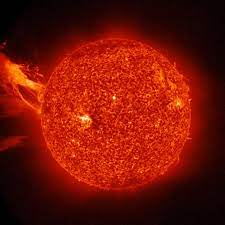A large solar flare appeared on the sun to usher in the 4th of July fireworks on Earth. The sun event originated from a sunspot named Active Region 2838 (AR2838) at 10:29 EST on Saturday, July 3rd.
The large sunspot had a flare which was registered as a class X1.5 on the scale NASA uses to track sun events. The area affected has since rotated to the far side of the sun.
This sun eruption was the largest since 2017. The 2017 sunspot appeared in AR 2192 and was about the size of Jupiter. It remains the largest solar flare observed in 24 years.
Solar Flare Facts
X-class solar flares are the strongest sun eruptions. Solar flare-ups can interrupt radio signals, interfere with power grids and affect the weather on Earth. More moderate M-class solar flares can create beautiful light shows when they supercharge the Earth’s auroras.
Sunspot AR2838 where Saturday’s flare appeared is a new active region on the sun. This sunspot region actually developed over a 12 hour period. It created an M2 flare (R1-Minor Radio Blackout.






